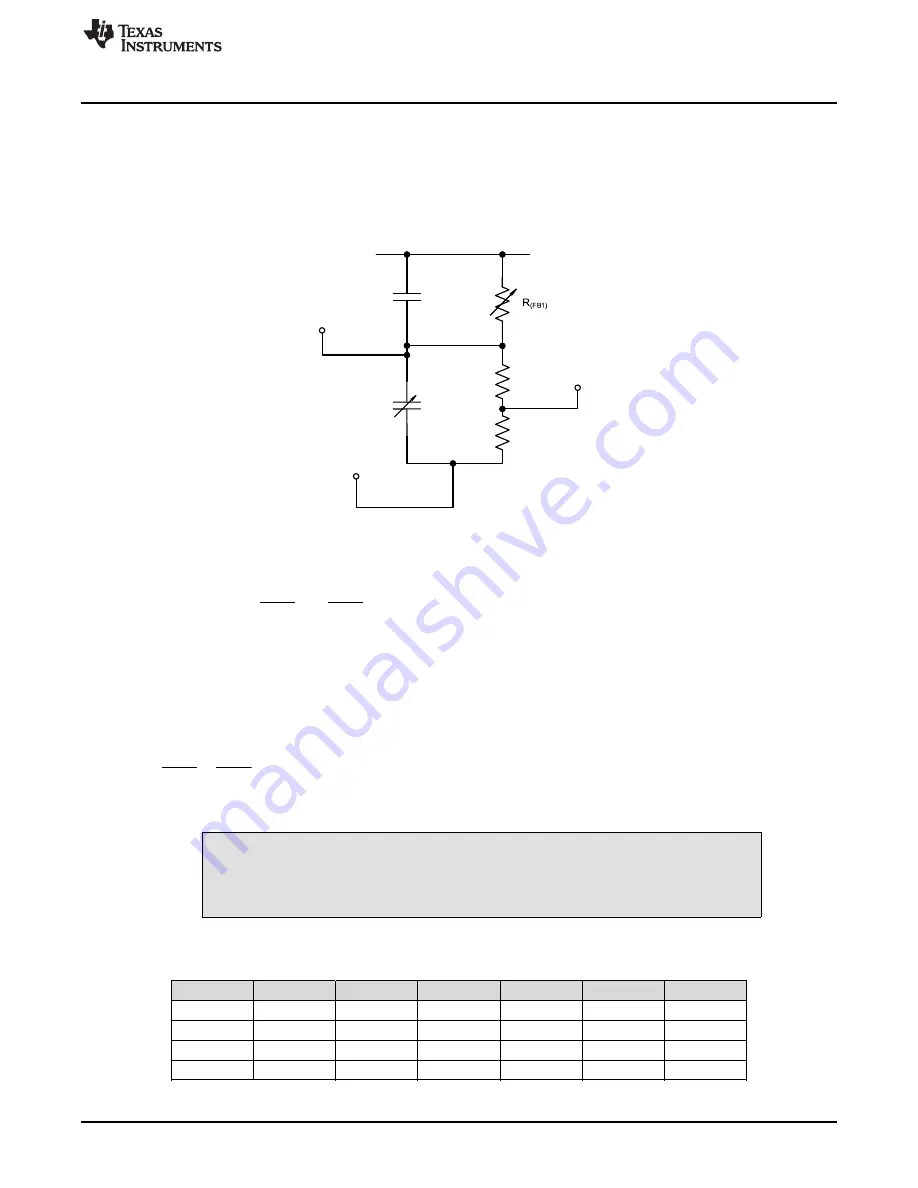
=
FB1
FB2
FB2
FB1
R
C
R
C
=
æ
ö
æ
ö
+
-
ç
÷
ç
÷
è
ø
è
ø
FB1
FB1
HV
FB
OP
FB2
FB2
V
V
V
R
R
1
R
R
C
(FB1)
C
(FB2)
R
(FB2A)
R
(FB2B)
V
HV
Pull down
Reference
Filte r O utp ut
V
FB
www.ti.com
Flyback Converter
4.1
Programming the HV Maximum Output Voltage
The high voltage output (HV) is set through an external network. For ease-of-use of this EVM, two
switches (SW3 and SW4) are installed to change R
FB1
and C
FB2
with ease. For a normal application,
switches should not be needed and those values can be set by passives.
Additionally, R
FB2
is split into two resistors to provide a reference voltage for the pull-down operational
amplifier (opamp) that is discussed in
Pulldown Network
.
Figure 9. V
HV
Feedback Network
The HV output voltage is given by:
Equation 2
(1)
where V
FB
= 1.30 V and V
OP
is the V
OL
of the opamp since it cannot go all the way to ground. TI
recommends the sum of the resistance of R
FB1
and R
FB2
be between 500 k
Ω
and 1 M
Ω
.
The capacitors are needed in the feedback network to increase the performance at low and high
frequencies. Because the charge storage is inversely proportional to the capacitance, use
Equation 2
to
calculate the values of the capacitors. In general, select a value around 22 pF for C
FB1
and size C
FB2
accordingly.
(2)
Refer to
Table 3
for the switch setting to change the maximum output voltage.
CAUTION
Be sure not to hot switch the SW3 and SW4 connection. This should only be
switched while the output is disabled or the board is unpowered.
Table 3. V
HV
Setting Based on the Jumper Configuration
SW3
SW4
R
FB2
C
FB2
R
FB1
C
FB1
V
MAX
Down
Down
5.49 k
Ω
8200 pF
2.05 M
Ω
22 pF
500 V
Down
Up
5.49 k
Ω
4505 pF
1.122 M
Ω
22 pF
275 V
Up
Down
5.49 k
Ω
3717 pF
0.866 M
Ω
22 pF
212 V
Up
Down
5.49 k
Ω
2710 pF
0.642 M
Ω
22 pF
158 V
13
SLOU407A – April 2015 – Revised May 2015
DRV2700EVM-HV500 High Voltage Piezo Driver Evaluation Kit
Submit Documentation Feedback
Copyright © 2015, Texas Instruments Incorporated




























